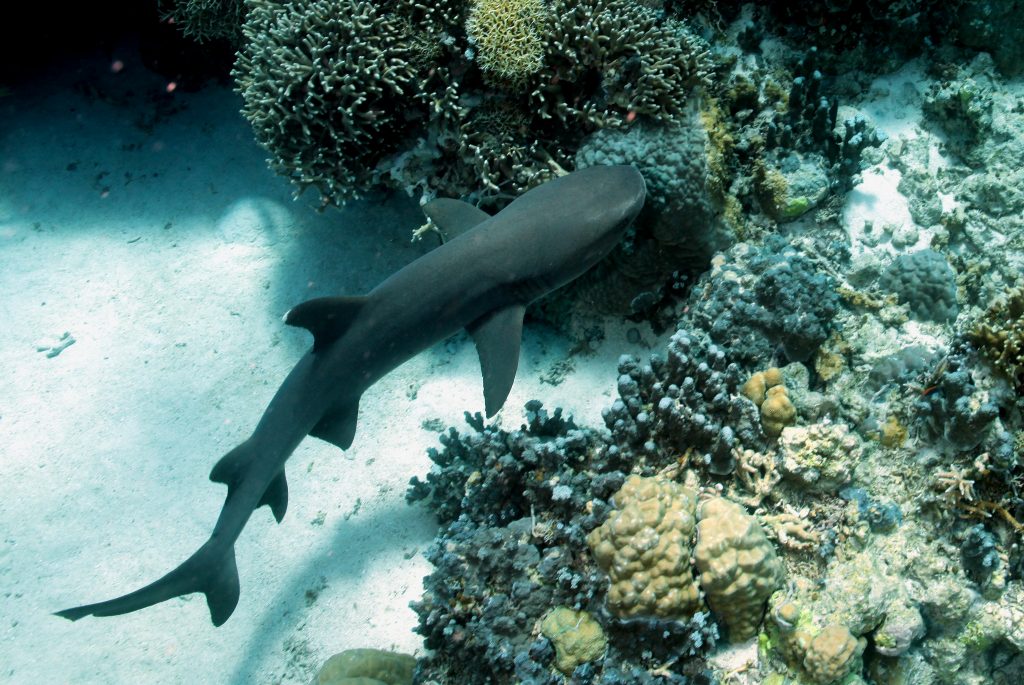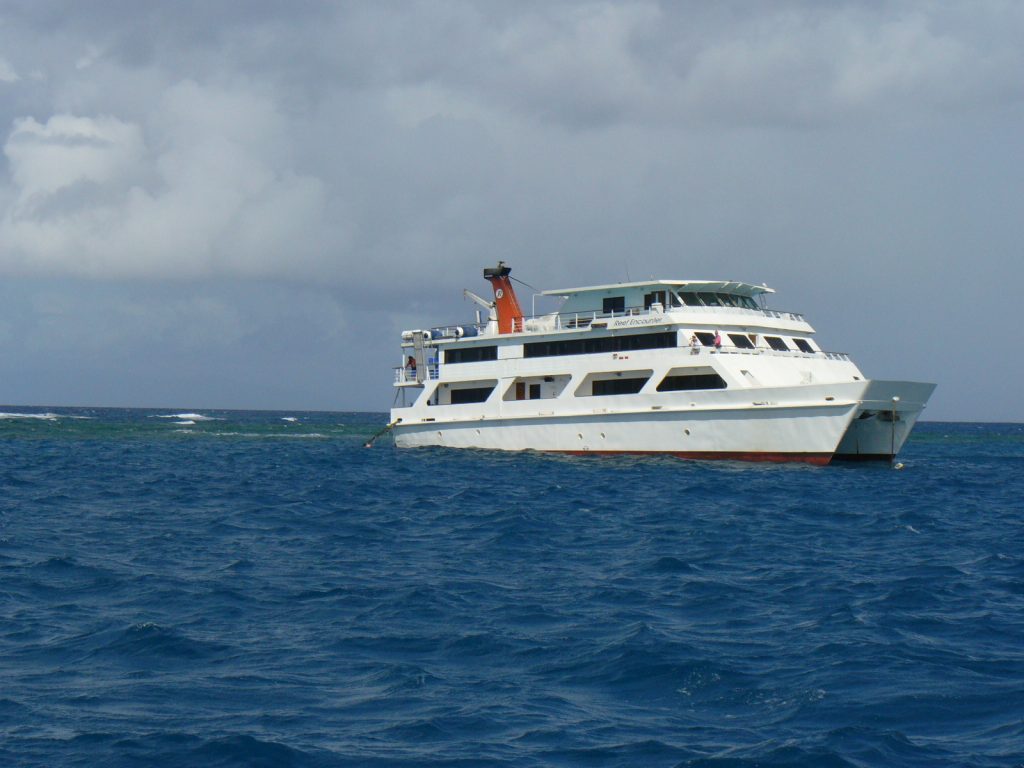It’s one of the natural wonders of the world, is famed for its beauty and it’s shrinking. The Great Barrier Reef is one of Australia’s less kept secrets, and it attracts hordes of people every year to experience the reef for themselves.
Granted, you can now use Google’s Great Barrier Reef cam to take a look beneath the waves yourself without ever getting in the water or boarding a boat, but for those of us that prefer the raw, physical experience, there’s no substitute for heading out to the reef and going for a dive. If you’re planning to go snooping around the bottom of the ocean, there are a few things you’ll want to consider when you make your preparations.
1. Location
First things first, you may have noticed that the Great Barrier Reef contains the word Great. That is no coincidence, the reef is huge! That leaves you with your first decision – which part do you want to dive?
There are a number of places which are suitable for diving, and which one you ultimately choose will depend upon where you’re setting out from, how experienced you are at diving (you’re more limited if you’re a first time diver as I was) and what it is you want to see. The thing with animals is that they live, hunt and travel to different places and aquatic creatures are no different. I’m going to guess that you’d like to avoid the more dangerous species if possible. Which brings me on to the next point:

2. Sharks
A lot of people, particularly tourists, travelers, backpackers and those hailing from distant lands, are rather afraid of the prospect of being bitten by a shark. Even more particularly, Great White Sharks. So to clarify: Great White Sharks prefer the colder waters and will usually stay away from the tropical northern waters. If you do see any sharks they will more than likely be timid reef sharks which are likely to flee.
TL:DR Be cautious but don’t let it ruin your trip. The chances of encountering a Great White are slim to none, but you should never rule it out. Besides, those reef sharks end up kind of cute in pictures.
3. Transport
Don’t swim to the reef.
Don’t canoe to the reef.
Get a boat.
You’ll want to set out rather early in the day to get to the reef with plenty of time to chill out, dive, swim, snorkel etc. There’s plenty to see and do while you’re out there. If you look either online, or at the various settlements along the coast, there are plenty of “tour operators”, aka people with boats who will take you out to the reef, perhaps provide you with the equipment you need and give you a bit of a guided dive – if you require it.
As I mentioned above, who you ultimately use to get to the reef will likely consider a few things, least of all the cost and the location. Do a bit of digging, get some recommendations. That little bit of research can go a long way.

4. Sunblock
It’s accepted that Australia is a pretty hot and sunny place. There’s also that whole issue about the ozone layer being thinner over head there. That makes sunscreen a pretty handy thing to have with you at most times while you’re out and about.
Have you ever noticed how you tan and burn easier when you’re swimming? You can expect much of the same when you’re out on the reef. The salt water doesn’t help your cause either, so make sure you keep plastering the sunscreen on and avoid the painful sunburn, or worse, sunstroke.
That said, when you’re donning your scuba gear, for the most part your body is covered and protected by your wet suit, and the deeper you go the less sunlight reaches you which makes you a bit less susceptible to being burnt. However, when you’re back on board there’s a good chance you’ll have peeled the wet-suit off, or as many people do, stripped down to half-mast (as in taken your arms and torso out of the wet-suit) and this is when you’re most likely to get sunburn. Cover up.
It’s a given and I’ve lost count on the number of times I’ve written it on here, but also make sure you stay hydrated. Even in the wet season.
5. Camera
Some tour providers also provide a throwaway waterproof camera – it’ll cost you, but it should work. It’s a completely different world under water so it’s always nice to take a few photographs of some pretty little fishies and cute reef sharks. Throwaway cameras are all fine and dandy but they’re not necessarily going to work well when you get to dark areas. At the end of the day, they just don’t offer the same quality as a DSLR or bridge camera.

Some tour providers also provide a throwaway waterproof camera – it’ll cost you, but it should work. It’s a completely different world under water so it’s always nice to take a few photographs of some pretty little fishies and cute reef sharks. Throwaway cameras are all fine and dandy but they’re not necessarily going to work well when you get to dark areas. At the end of the day, they just don’t offer the same quality as a DSLR or bridge camera.
About that DSLR. You’re going to be underwater. DSLRs are not waterproof. You’re going to need a water resistant casing.
If you don’t have one already, see if you can get your hands on one prior to your trip. There are waterproof cases available in quite a few places near the reef (I know for a fact that there are loads of them on display in Cairns) but they’re at prime Australian prices. If you’re not working in Aus, it’s probably going to sting you.
I’d say you’re looking in excess of $500. Get one beforehand if you can.
And don’t open it underwater.
6. Medicine
Ah. Sea sickness my old friend. It isn’t; I’m one of those lucky people that doesn’t really suffer from it. If you do though, you’ll want to get your hands on some sea-sickness tablets, medicines, whatever it is you need.
Boats tend to stay relatively still when they’re anchored but the wind and the waves still gives it a bit of a sway. When it’s tazzing across the water to get you to and from the reef however, it IS going to sway, and sway quite a lot at that. So if you want to avoid chucking in your handbag, I’d highly recommend you take precautionary pills and don’t eat something that will taste absolutely disgusting on the return journey. Pun intended.
Hopefully my experience of almost drowning on the reef (it’s really unnatural to exhale your air supply under water without using your nose, I won’t apologise for the fact I suck at it) will provide you with some insight to what you should consider when planning your own trip. It’s an excellent experience, and even if you dislike the idea of scuba diving you can spend some time swimming and snorkeling and still get to see the pretty fish and enjoy the warm, relaxing, clear blue water.
If you’ve been to the reef, or if I’ve missed some helpful info, let me know in the comments or drop me an email.